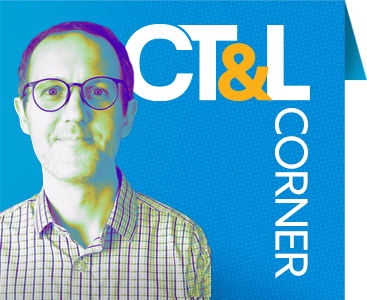Recently, I met with some Foundation Year students to talk about taking notes, studying, and critical reading. I’m happy to do these visits, as they’re one of my few opportunities to interact with students within their coursework. I started by asking how many of them had been ‘taught’ how to take notes in any substantive way: each class was roughly 50/50. We talked about the benefits of taking notes on paper versus the laptop. All of our discussion assumed that they were in fact taking their own notes (and not using AI the way many of us do in administrative meetings). Elsewhere, I asked some students what percentage of their classmates they knew (or thought) used Generative AI (such as ChatGPT or related programs that can summarize their assigned readings) in class, and they sheepishly guessed over half… for many reasons, I’m not surprised by this statistic, but I’m not encouraged by it either. I value authentic learning, and I know that learning comes with some amount of inherent friction.
Previously, I have written about the concept of ‘desirable difficulties,’ the challenges of learning that act like catalysts for memory and making connections. With note taking, the challenges of having to synthesize information (in other words, not just transcribing) is a key learning stimulus. In studying, explaining things to ourselves/another person (many of us have been told the best way to learn something is to teach it to someone else) fulfills a similar function. Reflecting on the results of an exam or a finished piece of work provides yet another opportunity to make sense of what we’ve learned: considering what we might’ve done differently, for instance. What emerges is not so much a perfect set of techniques as much as a principle: While Silicon Valley wants to sell us what is essentially a frictionless version of learning, decades of research on desirable difficulties suggests that this is a contradiction. In other words: No friction, no learning.
Here, I do think it’s worth distinguishing between ‘desirable difficulties’ and undesirable difficulties: as Kevin Gannon notes, we want to separate intellectual rigor from logistical rigor (the idea that assigning more reading or a longer paper will somehow result in more student learning). It’s worth questioning the value of strict deadlines (flexible deadlines can be beneficial), more reading assigned doesn’t mean more reading done (or more learning), and higher stakes assessments often encourage academic dishonesty.
Meanwhile, students are being advertised services that will take notes for them (lest we clutch our pearls too tightly, again, we often use this tech in meetings), summarize readings (that we may or may not cover in class), and, as has been written about elsewhere, write their papers for them. In a purely transactional view of education, where students are asked to complete tasks for a grade so they can move on to the next task, this behavior makes a certain kind of sense.
Yet, if students can complete the transaction (get the grade) while skipping over the desirable difficulties that contribute to deeper learning, we have some hard questions to ask ourselves. I’ll ask just one here: If we can’t (or shouldn’t) make desirable difficulties less difficult, how can we at least make them a bit more desirable? (Link to previous post about joy and persistence).
What I’ve described in the above paragraphs makes sense in traditional fields and disciplines where ‘study skills’ can be transferable across courses. What about in artmaking? What are the desirable difficulties in learning how to make art, and what constitutes ‘logistical rigor’ in art? Do we expect students to study, take notes, reflect, and experiment in their art ‘study?’ How do we make the case for the value of these processes? Next week, in a continuation of this piece, I do want to address what ‘practice’ looks like in the arts… Is it a noun? Is it a verb? Yes. Stay tuned.
Book Recommendation:
John Warner’s new book, More Than Words: How to think about writing in the age of AI, came out this past week. I’ve been a fan of Warner’s work dating back to one of his previous books on the dangers of formulaic writing, Why They Can’t Write. With the arrival of ChatGPT, the need to understand what writing is has only become more important. In a recent interview, Warner notes that he chose the title to emphasize that “there are important differences between the syntax generation of large language models and what happens when people read and write.” In other words, writing is more than just the words. He continues:
“I also like the subtitle “how to think about writing in the age of AI,” because I intend the book to demonstrate my thinking as an inducement for others to do their own thinking. It’s an example, not a prescription.”
I look forward to devouring the book and doing my own thinking.



